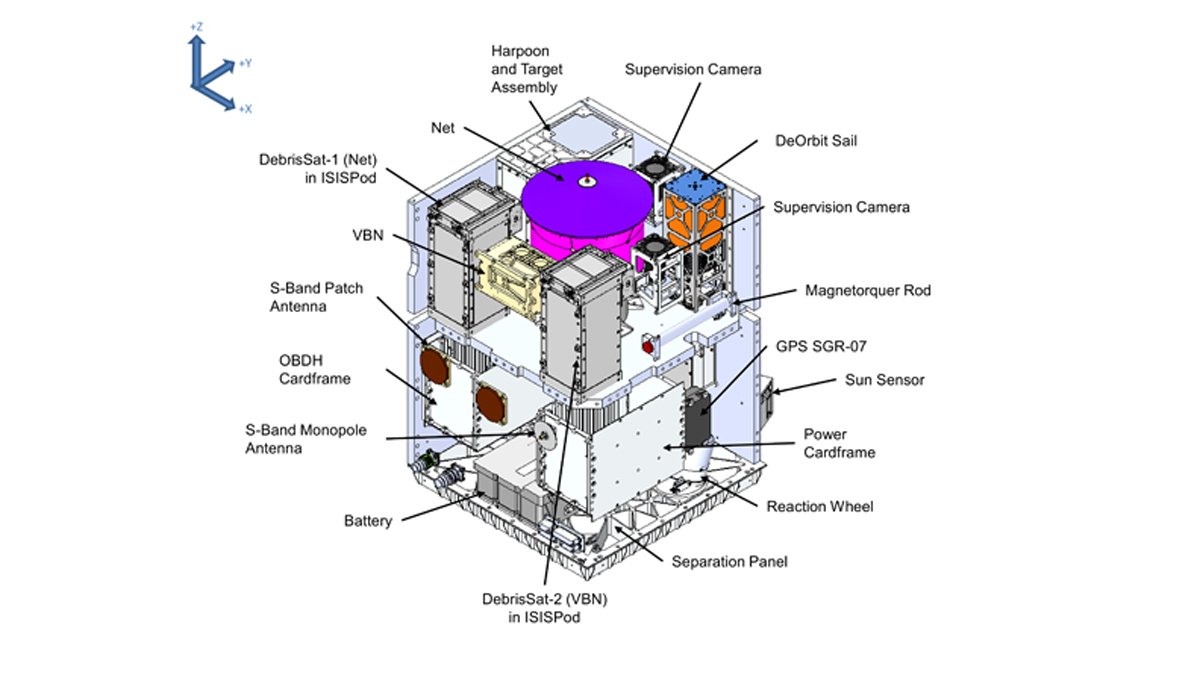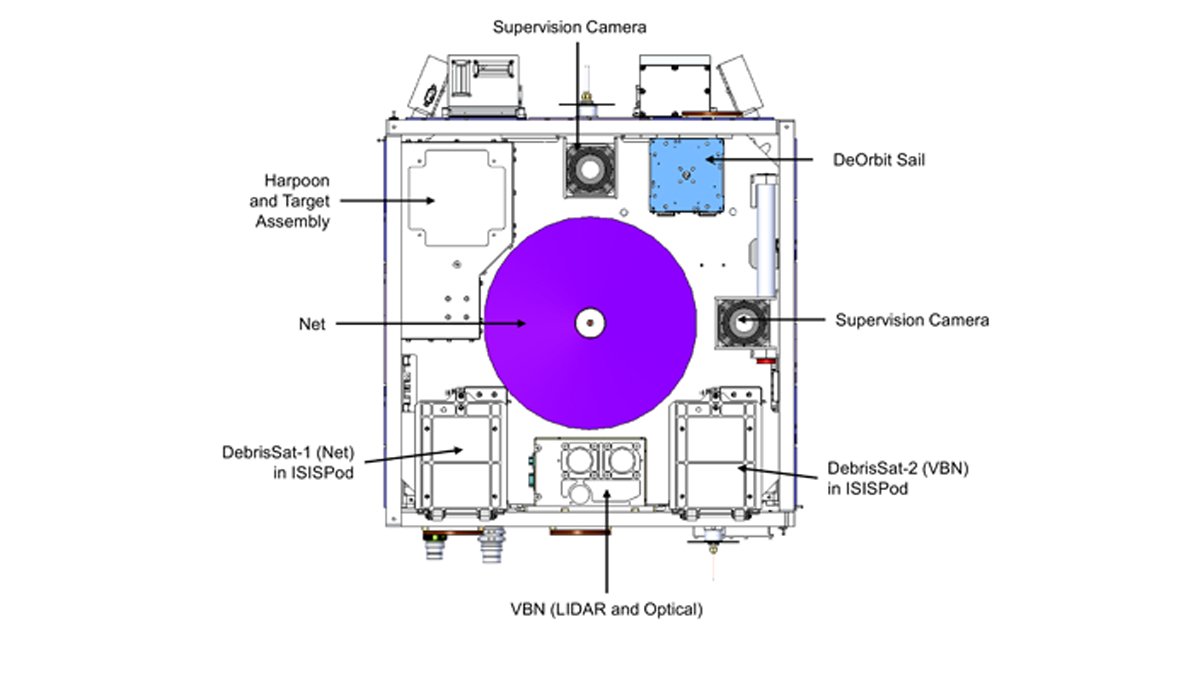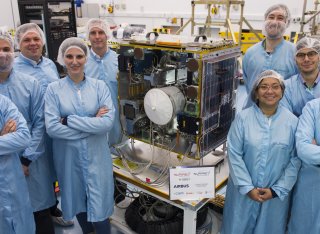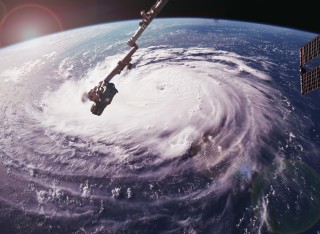
RemoveDEBRIS
RemoveDEBRIS is aimed at performing key active debris removal technology demonstrations to find the best way to capture the estimated 40,000 pieces of space debris that is orbiting Earth.
Mission overview
This mission will comprise of a main satellite platform (100kg) that will be propelled to the International Space Station by a SpaceX Falcon 9 rocket, and then deployed by the NanoRacks Kaber systems into orbit. Once in orbit, a series of experiments will take place on how to capture space debris.
The project is co-funded by the European Commission and other project partners, and is led by us, the Surrey Space Centre. The research leading to these results has received funding from the European Union Seventh Framework Programme (FP7/2007-2013) under grant agreement No. 607099.
Consortium
Besides our Centre the consortium includes:
- Airbus Defence and Space (Germany, UK, and France/Toulouse), the world’s second largest space company
- Airbus Safran Launchers (France); SSTL, a world leader in small satellites (UK)
- ISIS (Netherlands)
- CSEM (Switzerland)
- Inria (France)
- Stellenbosch University (South Africa).
The work is shared amongst the members of the consortium as briefly described below:
- Mission and Consortium coordination SSC (UK)
- Satellite system engineering ASF (France)
- Platform and Avionics - SSTL (UK)
- Harpoon - Airbus (UK)
- Net - Airbus (Germany)
- Vision Based Navigation - CSEM (Switzerland)/INRIA/Airbus (France/Toulouse)
- Cubesat dispensers - Innovative solutions in space (Holland)
- Target cubesats - Surrey Space Centre (UK)/STE
- Dragsail - Surrey Space Centre (UK).
Academic team
From January 2016 the RemoveDebris consortium has been led by Mr Simon Fellowes.

Professor Guglielmo Aglietti
Professor

Dr Christopher Bridges
Reader in On-Board Data Handling (OBDH)

Professor Craig Underwood
Emeritus Professor of Spacecraft Engineering
Launch
The RemoveDEBRIS platform was launched to the International Space Station using a NanoRacks service and Space X rocket in 2018. The sequence of launch is described as follows:
- The platform is packed in specialist boxes which are launched to the ISS
- The boxes are unpacked by the astronauts and installed on a slide table
- The slide table moves into the ISS Japanese module
- A special robotic arm grapples the platform and moves it outside the ISS
- The arm then releases the platform in a very specific direction and the mission begins.
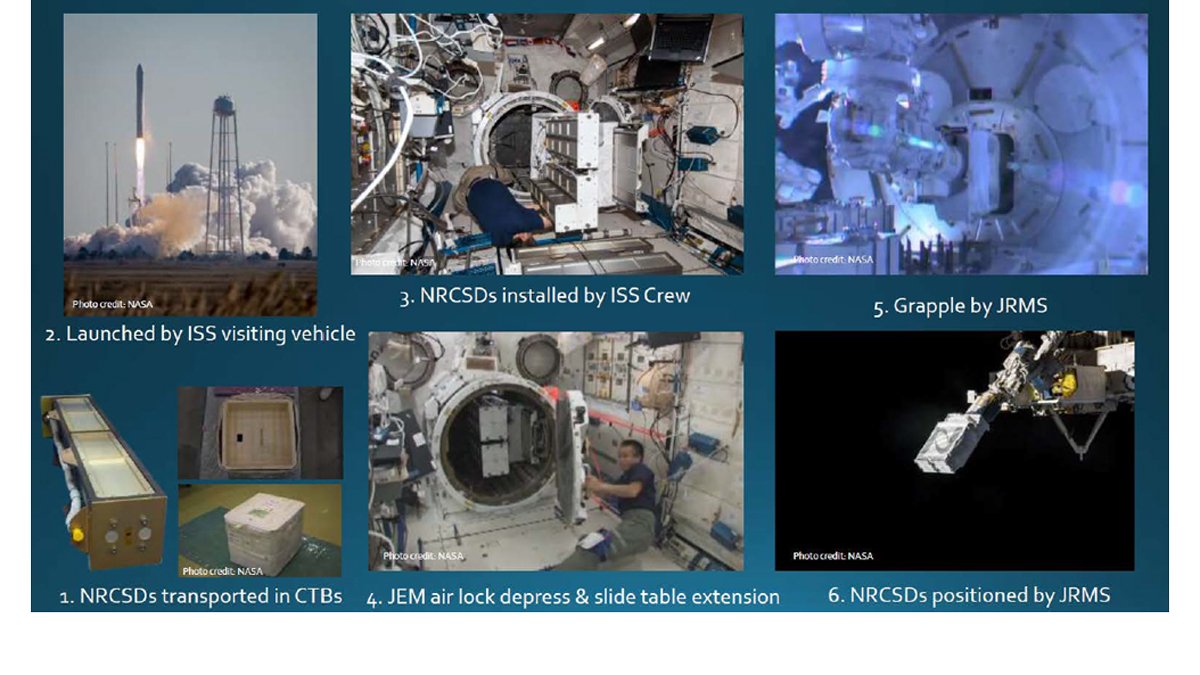
Launch sequence to the International Space Station.
Platform
The RemoveDebris platform is provided by Surrey Satellite Technology Ltd (SSTL) and utilises the next generation of low Earth orbit spacecraft avionics systems and structural designs being developed at SSTL called the X50 series. The X50 architecture is based on a modular and expandable philosophy that utilises common modules. This allows the system to be adaptable to varying mission applications and requirements.
The platform is based on four side panels, a payload panel, and a separation panel. Payloads are mounted either on the payload panel within the payload volume atop the avionics bay, or along the side panels as required.

